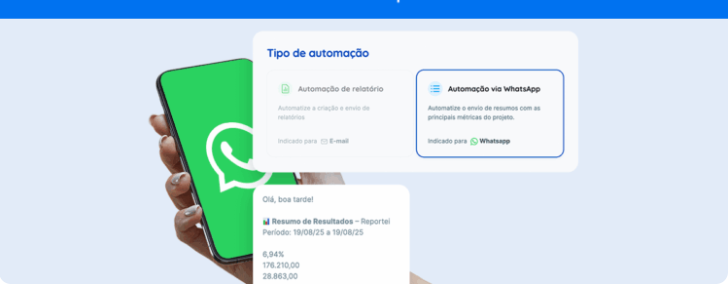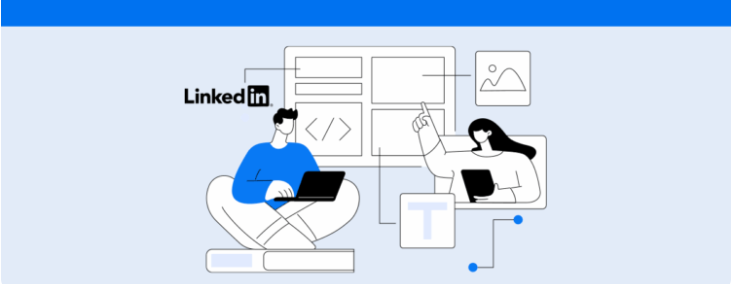Explore How Artificial Intelligence Influences Online Advertising and Helps Create More Strategic Campaigns
In the ever-evolving landscape of digital marketing, Artificial Intelligence (AI) stands out as a major catalyst for change in how we connect with the audience. Its ability to process enormous volumes of data and identify complex patterns opens doors to further enhance your advertising strategies.
As businesses compete for the attention of an increasingly segmented audience, AI has become an excellent ally in optimizing ad campaigns efficiently.
In this article, we will discuss the main ways to use Artificial Intelligence to take your campaigns to the next level, increasing not just visibility but also customer conversion. Read on!
How can Artificial Intelligence be used in advertising?
Artificial Intelligence revolutionizes online advertising in a profound and comprehensive manner. From real-time analysis of complex data to the creation of creative content, it helps to identify the best opportunities for your paid traffic strategy, allowing the display of ads personalized to the needs of your target audience.
Below, we will explore how AI can be used to optimize your Ads campaigns under the following topics:
- Data Collection and Analysis
- Enhanced Audience Segmentation
- Bid and Budget Optimization
- AI-based Ad Creation
- Trend Forecasting
- Keyword Optimization
- Performance Analysis and Relevant Metrics
Data Collection and Analysis
Playing a crucial role in data collection and analysis for paid traffic campaigns, AI elevates the efficiency of digital marketing strategies. It acts in both tracking automation and information integration, even when available in high volume and complexity.
Moreover, Artificial Intelligence allows you to identify patterns in these data and trends that help optimize audience segmentation, the investments applied in the campaigns, and new opportunities to improve your results.
Enhanced Audience Segmentation
Audience segmentation is a critical element for the success of paid traffic campaigns, and AI helps optimize this process—from analyzing demographic and behavioral data about the audience you want to reach to automatically refining your segmentation.
Alongside this, it helps discover new potential audiences and personalize the messages delivered, significantly improving campaign efficiency and increasing the likelihood of reaching your marketing goals.
Bid and Budget Optimization
Bid and budget optimization is an essential part of paid traffic campaigns, and Artificial Intelligence can be used for:
- Real-time metrics analysis to automatically adjust bids and optimize campaign performance.
- Using machine learning algorithms to understand user behavior patterns concerning ads. This allows it to adapt bids in real-time, according to the likelihood of each user’s conversion.
- Automated optimization, saving time and resources for marketers.
- Maximizing ROI by optimizing bids to increase return on investment and directing more resources to ad groups generating higher value conversions.
- Efficient budget allocation to distribute the campaign budget intelligently, ensuring that the most promising ad groups receive a larger share of the investment.
- Continuous optimization, which constantly adjusts bids and budgets to meet changes in market conditions and user behavior.
- Predictive analysis based on historical information, enabling marketers to predict the future performance of various bidding strategies and make informed decisions.
AI-based Ad Creation
Another way AI contributes to Ads campaigns is through automation, customization, and efficiency enhancement in the creative process.
Whether it’s creating headlines, images, or personalizing ads for different segments, Artificial Intelligence identifies the content with the highest potential to generate clicks and conversions and adjusts it in real-time to meet the preferences of each audience.
Trend Forecasting
Trend forecasting is an area where AI can play a vital role for paid traffic campaigns, allowing marketers to anticipate changes in audience behavior and adjust their strategies proactively.
It helps analyze large traffic volumes, detect behavior and consumption patterns, and leverage the benefit of continuous learning to always be one step ahead of the competition.
Keyword Optimization
For those working with paid traffic campaigns on Google Ads, a significant advantage is using AI to identify, select, and adjust keywords to get the best results.
The goal is to map out the standout terms, understand consumer search trends more easily, and optimize bids to maximize the campaigns’ ROI.
Performance Analysis and Metrics
By incorporating AI into the metrics analysis process, marketers can access detailed insights and automate many aspects of monitoring, thus enhancing the efficiency of advertising strategies.
One of the main advantages is its ability to process large volumes of real-time data, enabling instantaneous campaign performance tracking, allowing immediate adjustments whenever necessary.
Alongside this is the ability to identify patterns and trends from the information, compare key metrics across different campaigns, and predict future performance based on historical data.
Machine Learning for Continuous Improvement
Machine learning plays an important role in improving paid traffic campaigns, and this is where Artificial Intelligence comes in as a powerful tool to effectively implement these techniques.
The collaboration between AI and machine learning offers a range of ways in which campaigns can be continuously refined and improved, such as:
- Performance data analysis, identifying patterns and trends that can be used for future adjustments;
- Real-time feedback on ad performance, allowing quick and accurate adjustments;
- Bid and budget optimization from the history of campaigns, automatically adjusting to optimize ROI and achieve specific goals;
- Learning from A/B tests to identify ad variations that are more effective, automating the process of refinement and performance improvement.
In other words, AI has become an essential tool for optimizing marketing efforts – so much so that platforms such as Google Ads and Meta Ads have adapted to this reality and offered increasingly more resources to their users.



